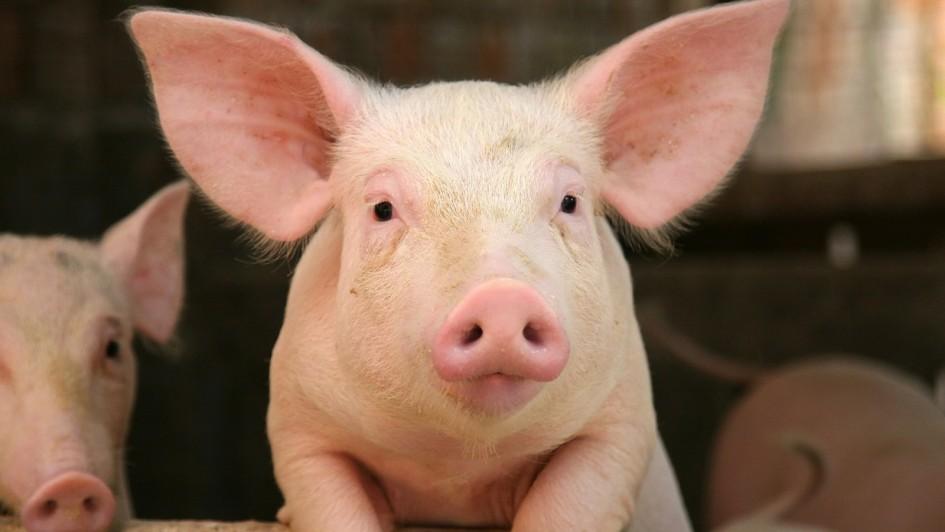Scientists engineer first human-pig hybrid embryo
By Emma Gruner, Staff Writer
The idea of a human-animal hybrid is one that usually generates a host of exotic, otherworldly images. Centaurs, mermaids, freakish mutants… all beings that one generally does not expect to encounter outside of fantasy and science fiction. In actuality, though, these hybrids may be closer to becoming a reality than previously thought.
On January 26, a team of researchers at Salk Institute, led by Carlos Izpisúa Belmonte, announced in Cell magazine that they had successfully engineered a human-pig embryo.
It is worth noting that these embryos are not designed to mature into nightmarish hog-people with any semblance of human intelligence or consciousness.
Rather, the motivation behind the research is an innovative new approach for growing human organs for those in need. According to the U.S. Department of Health and Human Services, an average of 22 people a day die waiting for organ transplants.
While there have been some attempts to grow human organs in Petri dishes, the process is often tedious, and in any case, these organs are never identical to the ones that develop inside an actual human.
Thus, the prospect of growing a transplantable human organ inside a non-human being, such a pig, is a useful and promising one.
Why pigs, one might ask? According to Pablo Ross, co-author of the Salk study, the organs of pigs are roughly the same size of those in humans, yet they mature at a much faster rate.
The gestation period of a pig is four months to a human’s nine, and a newborn piglet can grow into a 200-pound adult in only five months. Total, that’s only nine months from conception to organ-harvest time, which, considering the three-year wait for the average kidney transplant, is very encouraging.
To create the hybrid embryos, the Salk Institute team injected human pluripotent stem cells (adult cells that have been reverted back into an embryonic state) into the partially developed embryos of pigs.
Originally, the team implanted around 2000 hybrid embryos into 41 sows, which ultimately resulted in 18 pregnancies and 186 embryos. After three to four weeks, the embryos were removed from the sows and analyzed by the researchers.
According to study author Jun Wu, approximately one out of every 100,000 cells in the embryos were human rather than pig, with the human cells developing into precursors of various tissue types, including heart, liver, and neurons.
This project is not the first or only instance in which interspecies hybrids have been created in this manner.
On January 25, an international team of researchers, led by Hiromitsu Nakauchi, published an account in Nature about their work with rat-mouse hybrids. In this study, the scientists were able to successfully grow a mouse pancreas inside of a rat. They were then able to transfer insulin-secreting tissue from this pancreas into those of diabetic mice, treating their illness without instigating a harmful immune response. The Salk team expanded upon this research, introducing rat stem cells into mouse embryos. The mice in question survived to adulthood, sporting eyes, hearts, and pancreases enriched with rat cells.
With the knowledge that such interspecies organ growth was possible, it was only a matter of time before they turned their attentions toward humans.
While the creation of the human-pig embryo is undoubtedly a huge advancement, the project is still not without its obstacles.
For one, the research is currently not eligible for federal funding, forcing the Salk Institute to rely on private donations. In 2015, the U.S. National Institute of Health instituted a moratorium that banned federal contributions to certain human-animal hybrid research. This stance is primarily for ethical reasons; many are concerned that such studies could result in an animal developing a humanlike consciousness, although the researchers assert that such an outcome is unlikely. While the NIH did draft a less restrictive policy in August 2016, it has yet to be implemented.
Of course, as mentioned above, the Salk team is still in the very early stages of this research; by all accounts, a healthy, adult human-pig hybrid is likely still a far-distant prospect. Pigs and humans are much more distantly related than rats and mice, so coaxing the different cells to grow together is not an easy feat.
The researchers’ results confirmed this difficulty, as the four-week-old embryos analyzed were much smaller and less developed than a pig embryo would normally be at that stage in the pregnancy.
Obstacles aside, the repercussions of this study are huge. “We were just trying to answer the yes or no question of, can human cells contribute at all? And the answer to that question is yes,” Izpisúa Belmonte said.
The fact that the human cells survived embryonic development at all is immensely encouraging towards those meaning to continue the research.
As the team continues to tweak their methods, they can still use the hybrids to study human embryo development and disease in an environment not affected by the normal ethical constraints. In any case, this particular field of science promises some exciting developments in the next several years!

